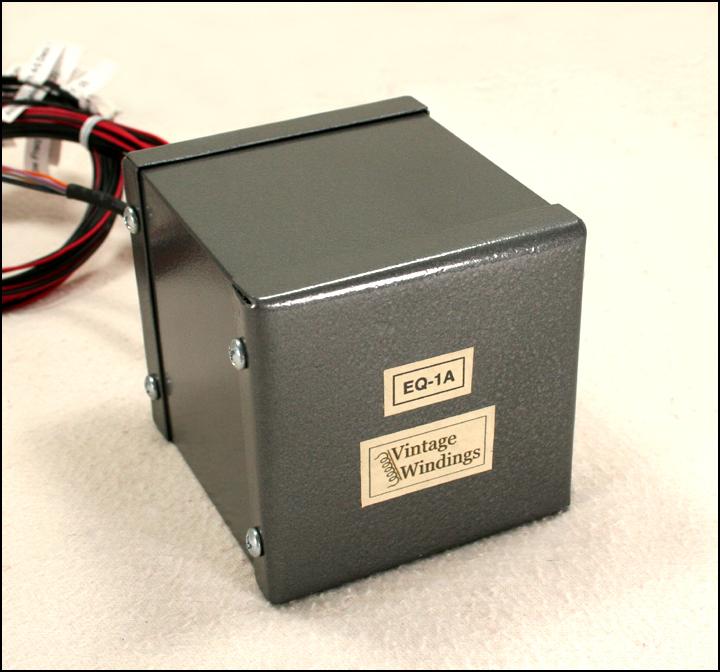Hi all,
I have built a clone of a solid-state Pultec EQP-1A inspired by Chris Preston's document:
http://vintagewindings.com/tech%20swag/Pultec%20EQP-1A3%20DIY.pdf
I used original Triad HS-56 transformers in and out, along with Chris's custom inductor.
I spent a lot of time analyzing the wiring layouts in his document, his wiring diagram (http://vintagewindings.com/tech%20swag/Vintage%20Windings%20EQ-1A%20Wiring%20Guide.pdf) and rainton's tube layout (filter section) (http://www.mediafire.com/file/2b8py0igkenkh7l/Pultec_EQP-1A__layout_rev1_31.pdf) and planned my approach of the build.
I finally got it wired up and right out of the gate I have it working. Well, sort of...
Everything works as expected except it seems that the 20Hz boost is difficult to detect. Not sure if it's because I'm feeding the input of the EQ with iPhone audio (I know, I know but my home studio is in various states from my patch bay being rewired or gear stuck in storage ). Or if it's because of my monitors (pair of JBL 4311, don't think so?). I double-checked my wiring, seems OK. The other LF frequencies are fine. Just 20Hz boost...
). Or if it's because of my monitors (pair of JBL 4311, don't think so?). I double-checked my wiring, seems OK. The other LF frequencies are fine. Just 20Hz boost...
Any ideas?
Thanks,
Chris
I have built a clone of a solid-state Pultec EQP-1A inspired by Chris Preston's document:
http://vintagewindings.com/tech%20swag/Pultec%20EQP-1A3%20DIY.pdf
I used original Triad HS-56 transformers in and out, along with Chris's custom inductor.
I spent a lot of time analyzing the wiring layouts in his document, his wiring diagram (http://vintagewindings.com/tech%20swag/Vintage%20Windings%20EQ-1A%20Wiring%20Guide.pdf) and rainton's tube layout (filter section) (http://www.mediafire.com/file/2b8py0igkenkh7l/Pultec_EQP-1A__layout_rev1_31.pdf) and planned my approach of the build.
I finally got it wired up and right out of the gate I have it working. Well, sort of...
Everything works as expected except it seems that the 20Hz boost is difficult to detect. Not sure if it's because I'm feeding the input of the EQ with iPhone audio (I know, I know but my home studio is in various states from my patch bay being rewired or gear stuck in storage
Any ideas?
Thanks,
Chris






















![Soldering Iron Kit, 120W LED Digital Advanced Solder Iron Soldering Gun kit, 110V Welding Tools, Smart Temperature Control [356℉-932℉], Extra 5pcs Tips, Auto Sleep, Temp Calibration, Orange](https://m.media-amazon.com/images/I/51sFKu9SdeL._SL500_.jpg)












